Gallery
A wide range of tropical and subtropical species can be found across different regions of the northwest Atlantic. Below you’ll find images of reported species to the GSO Project. Click on the photos below to learn more about each species.
If you don't see a photo of a fish you've sighted, try consulting our Species List on the right. This list is ever-growing with more and more sighting reports coming in! If you've got photos of a GSO not pictured in our gallery below, but would like to submit them, head to our contact page for more info.
The GSO Project would like to thank all of the iNaturalist users and underwater photographers that lend their images to this page. Special thanks to Brian Weber for his contributions. More of his work can be found here.

Blue Angelfish - Holacanthus bermudensis
Photo credit - Michael O'Neill
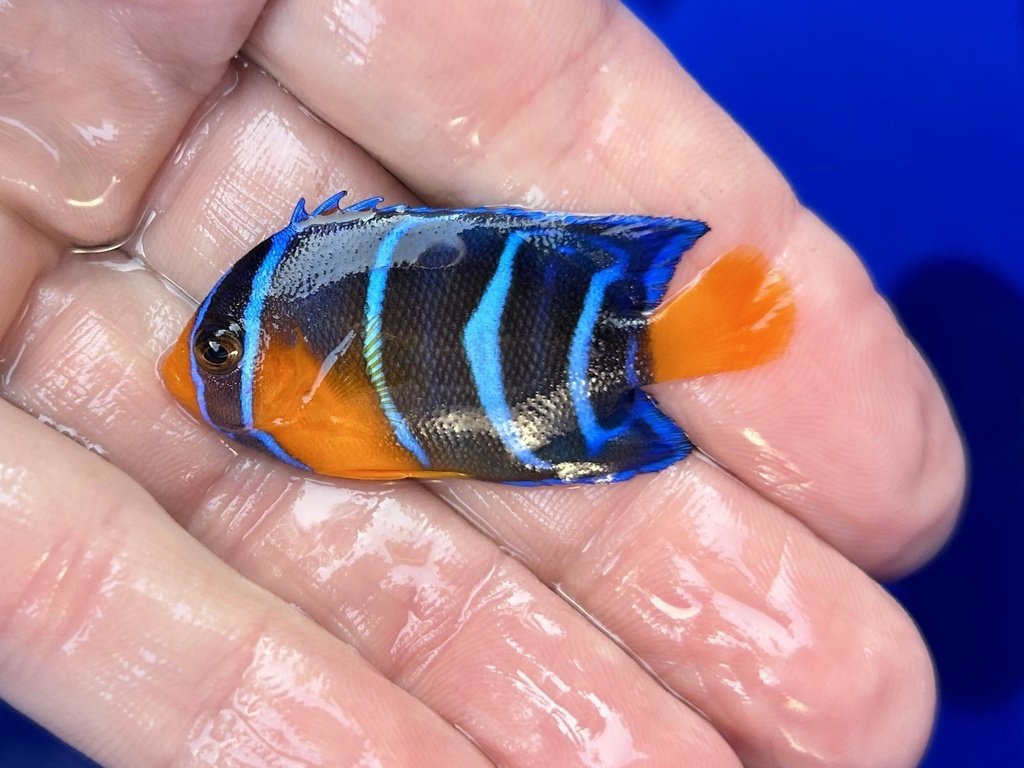
Queen Angelfish - Holacanthus ciliaris

Spotfin Butterflyfish - Chaetodon ocellatus
One of the most commonly found tropical species, these quick to hide butterflyfish may appear as just a flash of yellow before darting to the nearest hiding place. Photo credit: Brian Weber

Foureye Butterflyfish - Chaetodon capistratus
Known for their distinctive false eye-spot at the base of their tail, Foureye Butterflyfish also commonly display dark gray vertical bands as juveniles. Bonus points if you spot the juvenile trunkfish in this photo as well! Photo credit: Maria Mitchell Association
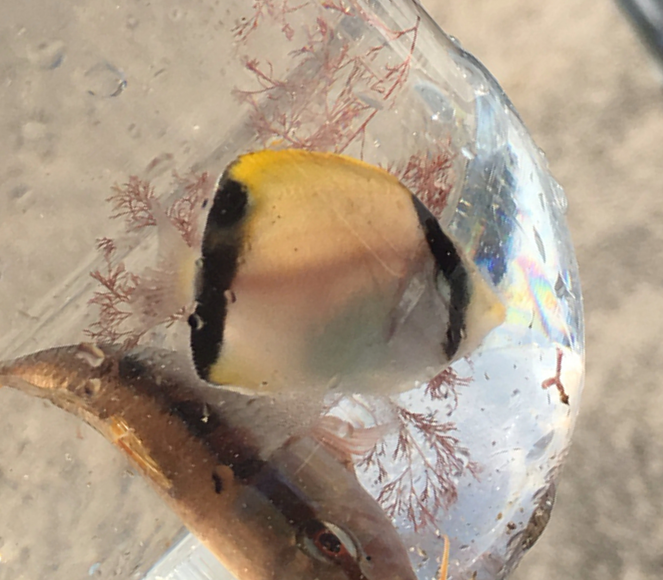
Reef Butterflyfish, C. sedentarius - photo: A. Gardner
Similar in appearance to Spotfin Butterflyfish, but far less-commonly reported, Reef Butterflyfish have a distinctive vertical black band at the base of the caudal fin.
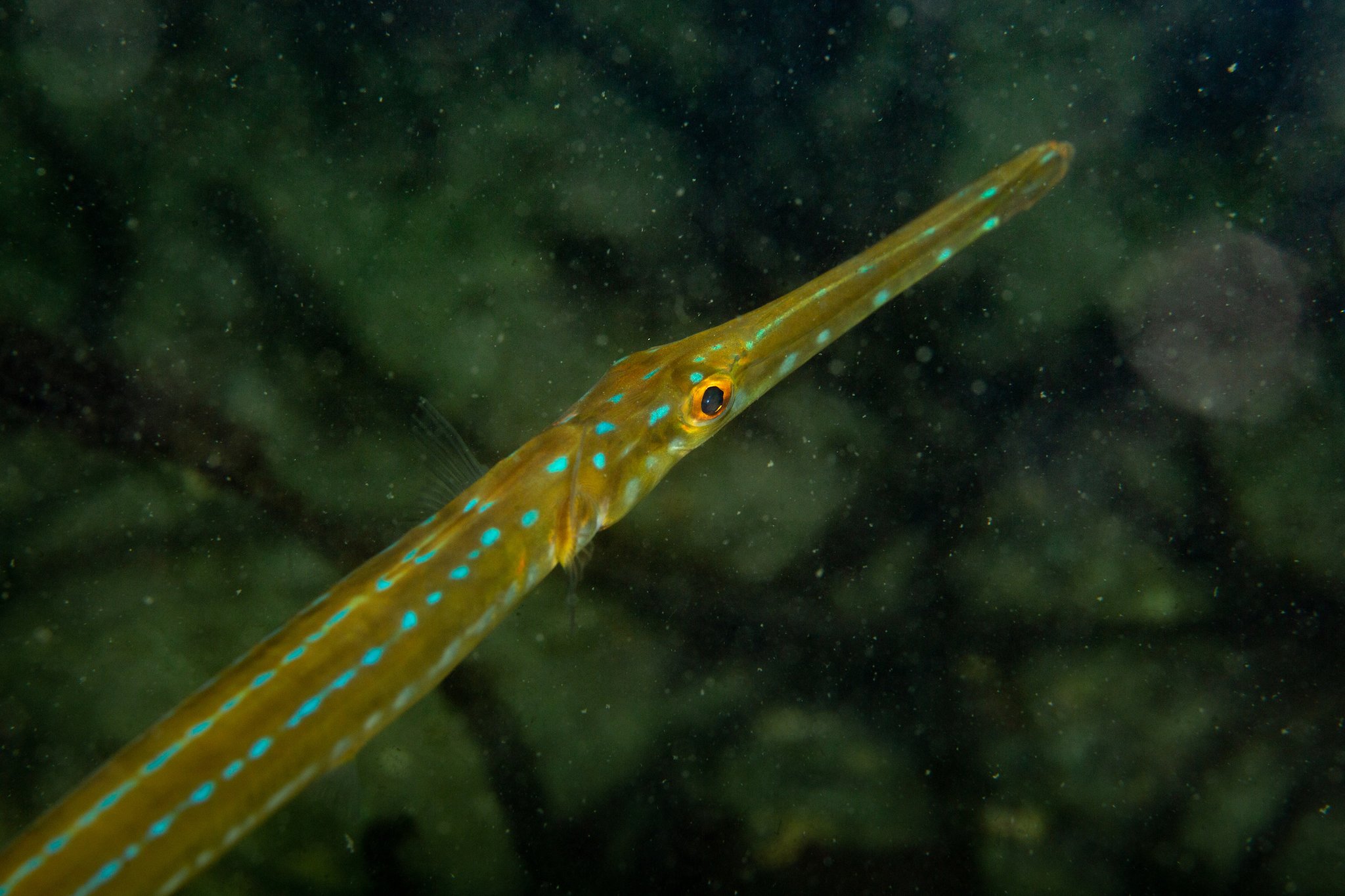
Bluespotted Cornetfish - Fistularia tabacaria
Often observed orienting with seagrass beds, these relatives of seahorses and trumpetfish are typically 6-10" in length when sighted in the NW Atlantic. The can grow to several feet in length as adults! Photo credit - Alex Shure

Short Bigeye - Pristigenys alta
With a facial expression most anyone could love, Short Bigeyes can be found just 1-2" in length as GSO's. Distinguished from Glasseye or Bigeye snappers, they have extremely short bodies from mouth to tail making their profile almost circular. Photo Credit: Brian Weber

Glasseye Snapper - Heteropriacanthus cruentatus
Photo credit - Aidan Perkins

Twospot Cardinalfish - Apogon pseudomaculatus

Cowfish
These adorable members of the boxfish family might be hard to find when diving in the Northeast. Sometimes only the size of a bean, these animals tend to reside in seagrass beds.

Doctorfish - Acanthurus chigurus
A member of the tang family, Doctorfish are very close in appearance to Ocean Surgeonfish. The notable difference being faint vertical bars along the sides of the body.
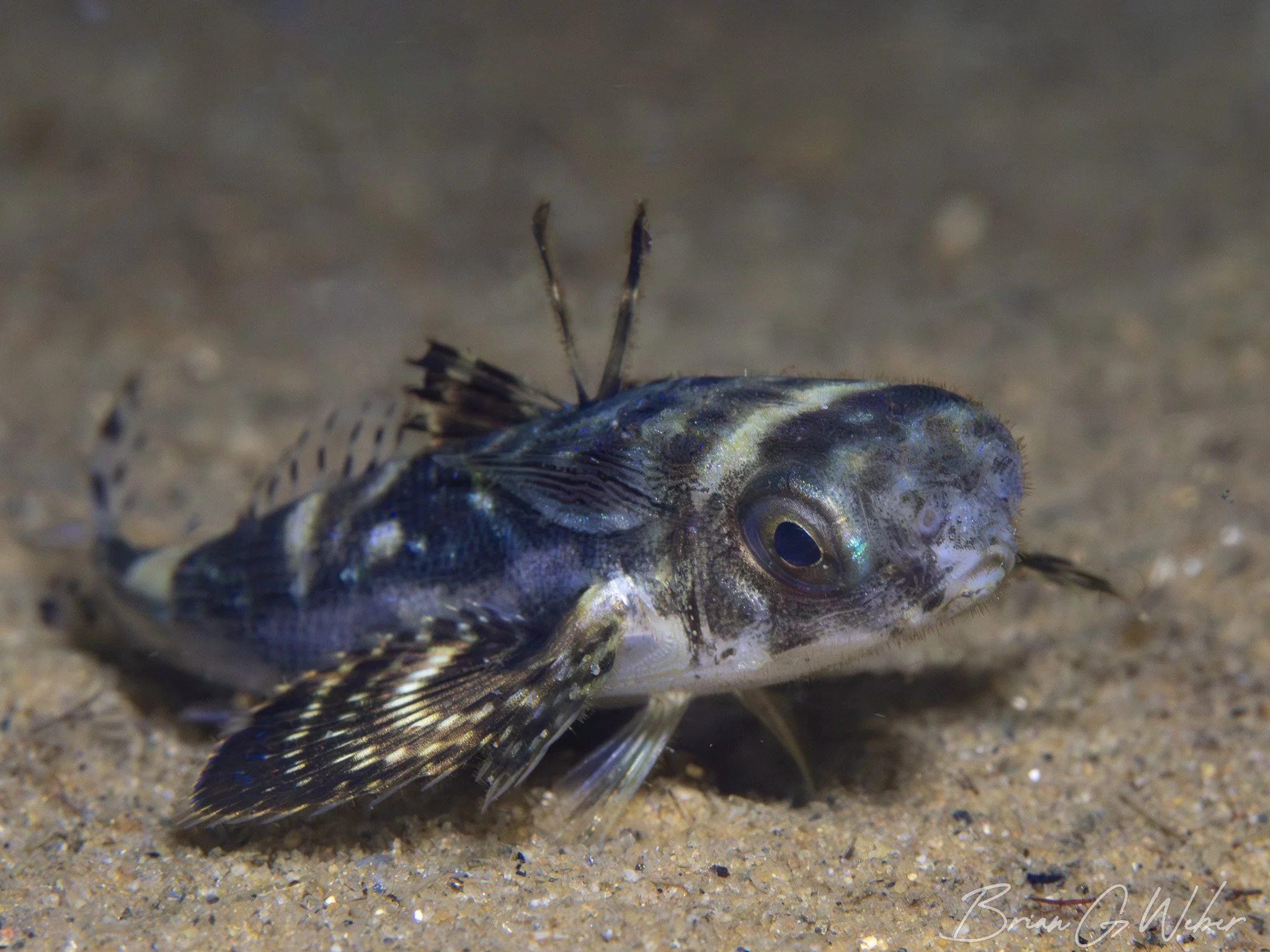
Flying Gurnard - Dactylopterus volitans
The Flying Gurnard is famous for magnificent pectoral fins with vibrant blue coloration. Photo Credit: Brian Weber

Plumed Scorpionfish - Scorpaena gradicornis
Masters of disguise and defense, these fish camoflauge well and pack a powerful punch due to venomous spines. Photo credit: The Virginia Living Museum

Sargassum Fish - Histrio histrio
A member of the frogfish family (Antennariidae) and the anglerfish order (Lophiiformes), these fish perch in floating Sargassum seaweed waiting for their prey. These floating mats of seaweed originate in the subtropical Atlantic and occasionally reach New England waters.

Planehead Filefish - Stephanolepis hispidus
Photo credit - Michael Zambardino
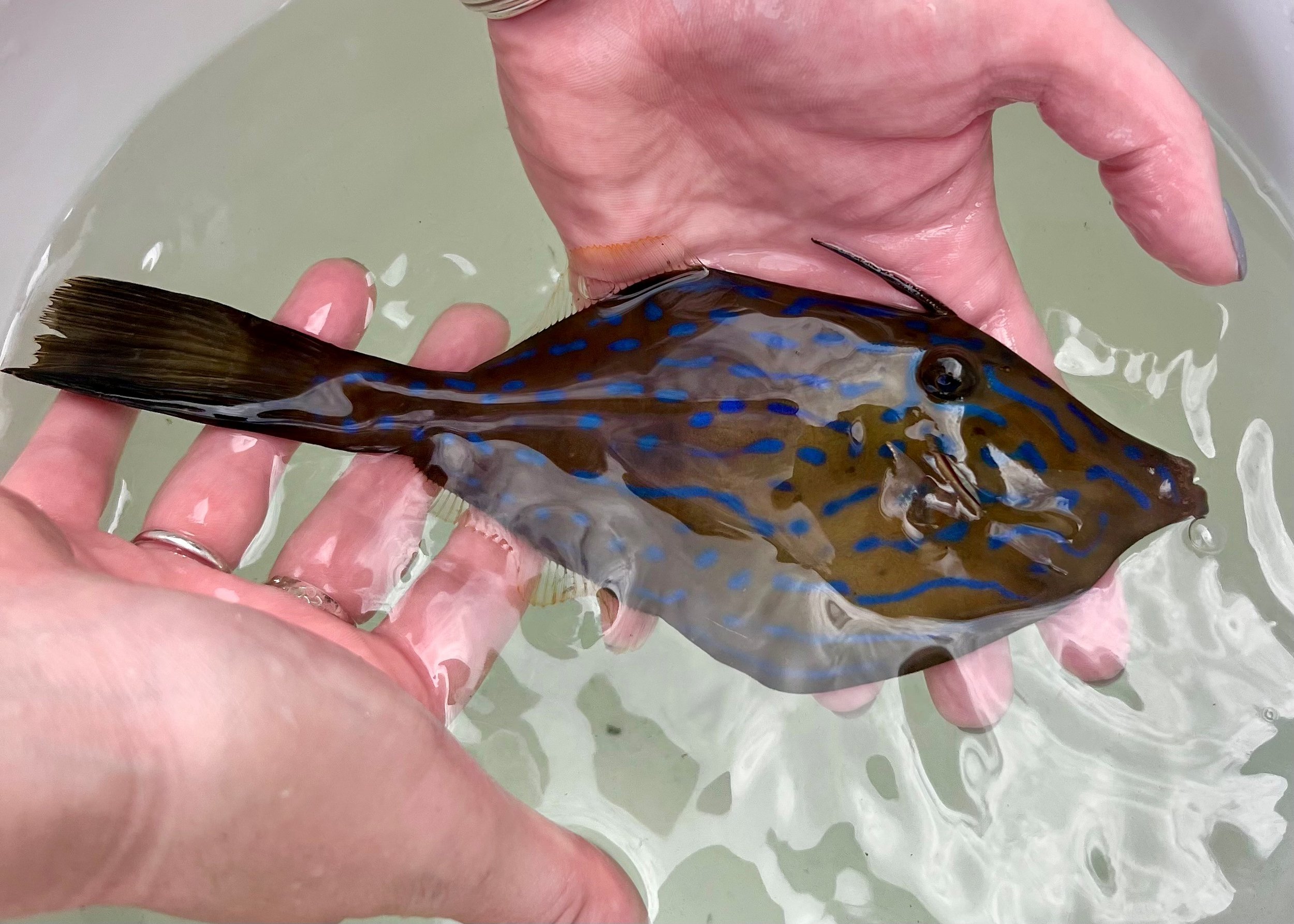
Scrawled Filefish - Aluterus scriptus
Photo credit - Lindsay Phenix & Chris Bauernfeind
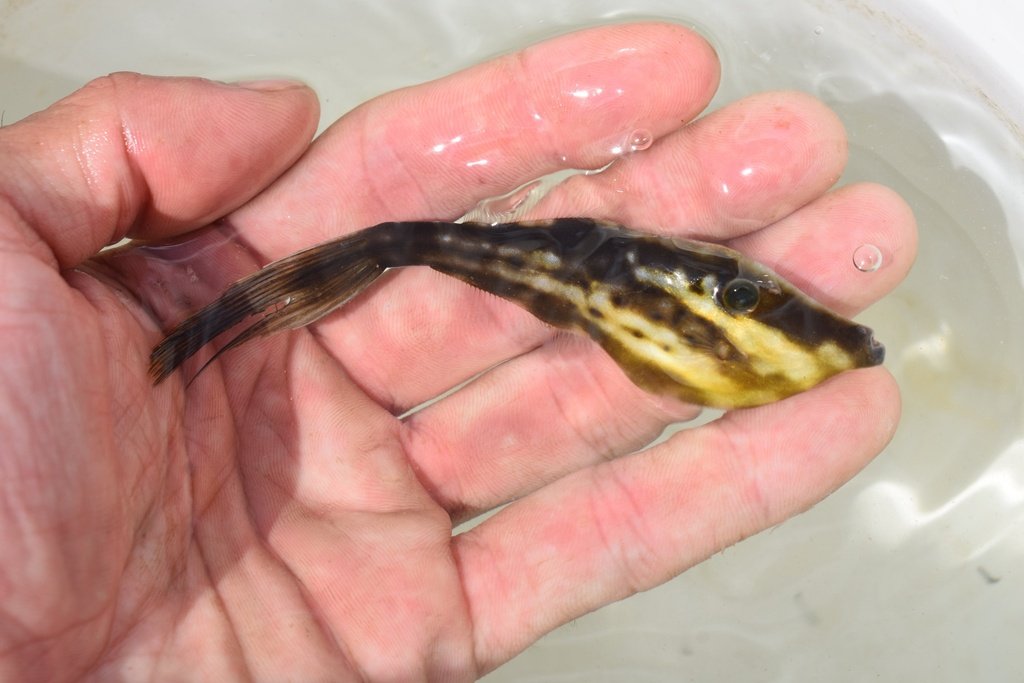
Orange Filefish - Aluterus schoepfii
Photo credit - Michael Zambardino

Red Grouper - Epinephelus morio

Gag Grouper - Mycteroperca microlepis
Gag grouper are one of several species found as juveniles through the Gulf Stream Orphan phenomenon. These species can be hard to identify in their post-larval and juvenile phases due to drastic color and pattern variations.
Photo: Mary McCarthy, Virginia Aquarium

Black Grouper - Mycteroperca bonaci
Photo credit - Aidan Perkins

Snowy Grouper - Epinephelus niveatus
One of a handful of grouper species that can become Gulf Stream Orphans, Snowy Groupers stick out in a crowd thanks to distinct white spots. Photo credit: Maria Mitchell Association

Scamp Grouper - Mycteroperca phenax
Photo credit - Michael Zambardino

Dwarf Goatfish - Upeneus parvus
While native to the southeastern US and Caribbean as adults, Dwarf Goatfish have been spotted in New England waters due to the Gulf Stream and their pelagic juvenile stage.
Photo: Mike McDevitt

Permit - Trachinotus falcatus
A member of the fast-moving jack family Carangidae, these fish can grow up to several feet. When seen along the New England coast as GSO's these fish are only a few inches in length.

Florida Pompano - Trachinotus carolinus
Another member of the jack family, the Florida Pompano is often confused with the Permit, particularly as juveniles. Pompano generally exhibit a more elongated body compared to permit. Photo credit: Michael O'Neill

Banded Rudderfish - Seriola zonata
Commonly confused with pilotfish, the banded rudderfish exhibits similar bold bands as juveniles that fade as the fish matures. Photo credit - Aidan Perkins

Crevalle Jack - Caranx hippos

Atlantic Needlefish - Strongylura marina
A common coastal and estuarine species, Atlantic Needlefish are commonly reported up and down the east coast of North America in seasonally warm waters. Based on their distribution this species is generally considered not a "true" GSO, since much of their distribution is independent of Gulf Stream dispersal. Photo credit - Michael Zambardino

Atlantic Moonfish - Selene setapinnis
A close relative of the Lookdown, Selene vomer, the Atlantic Moonfish has a more deeply curved ventrum (belly). This species is relatively commonly found as juveniles (approximately 1-2”TL) in the summer months.
Photo credit: Center for Coastal Studies

African Pompano - Alectis ciliaris
Photo credit - Aidan Perkins
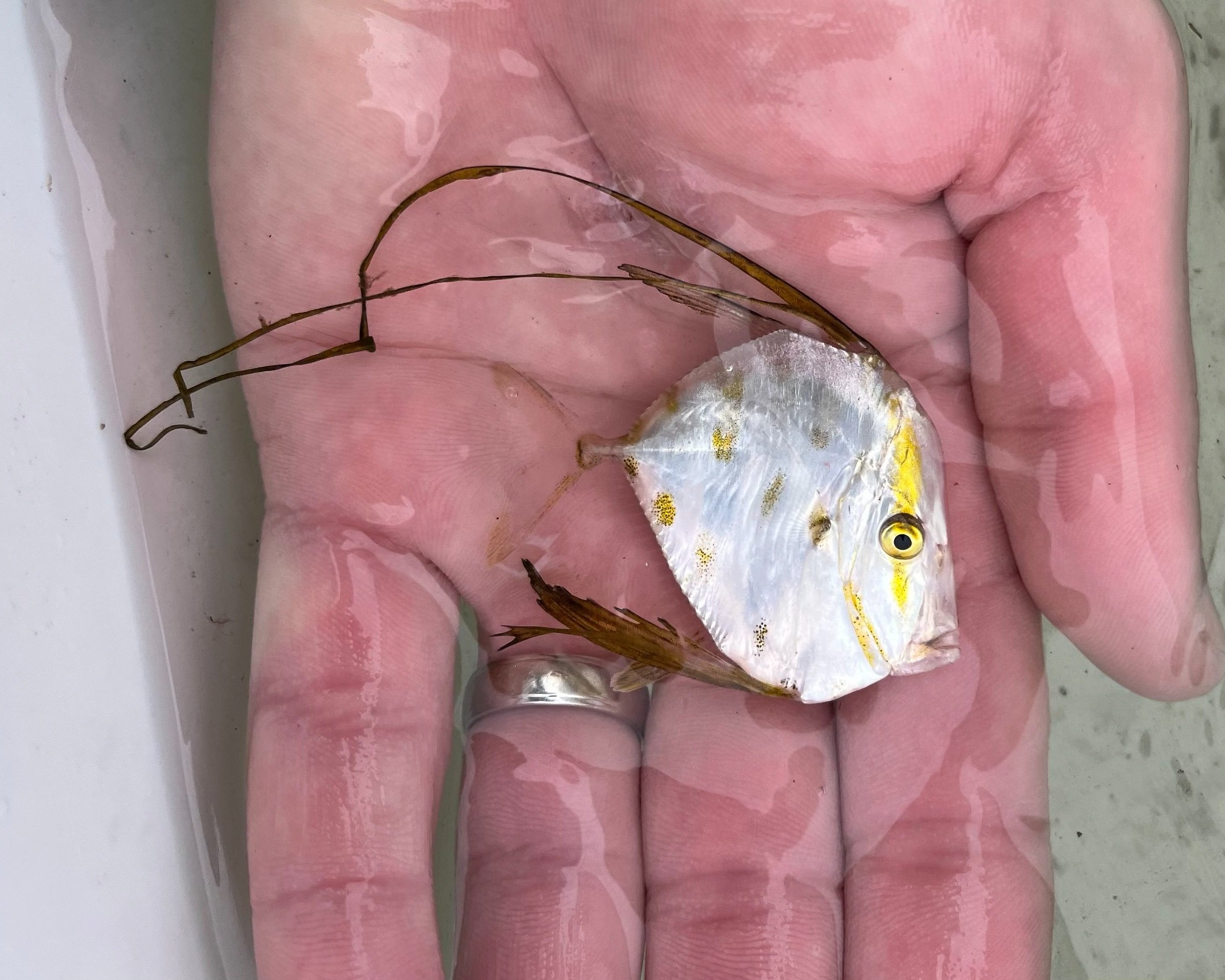
Lookdown - Selene vomer
Known for their metallic shimmer and distinctive face, Lookdowns are another member of the jack family, Caragidae that can be found in shallow waters along the East Coast of the U.S. As juveniles, this species has long ribbon-like fins.
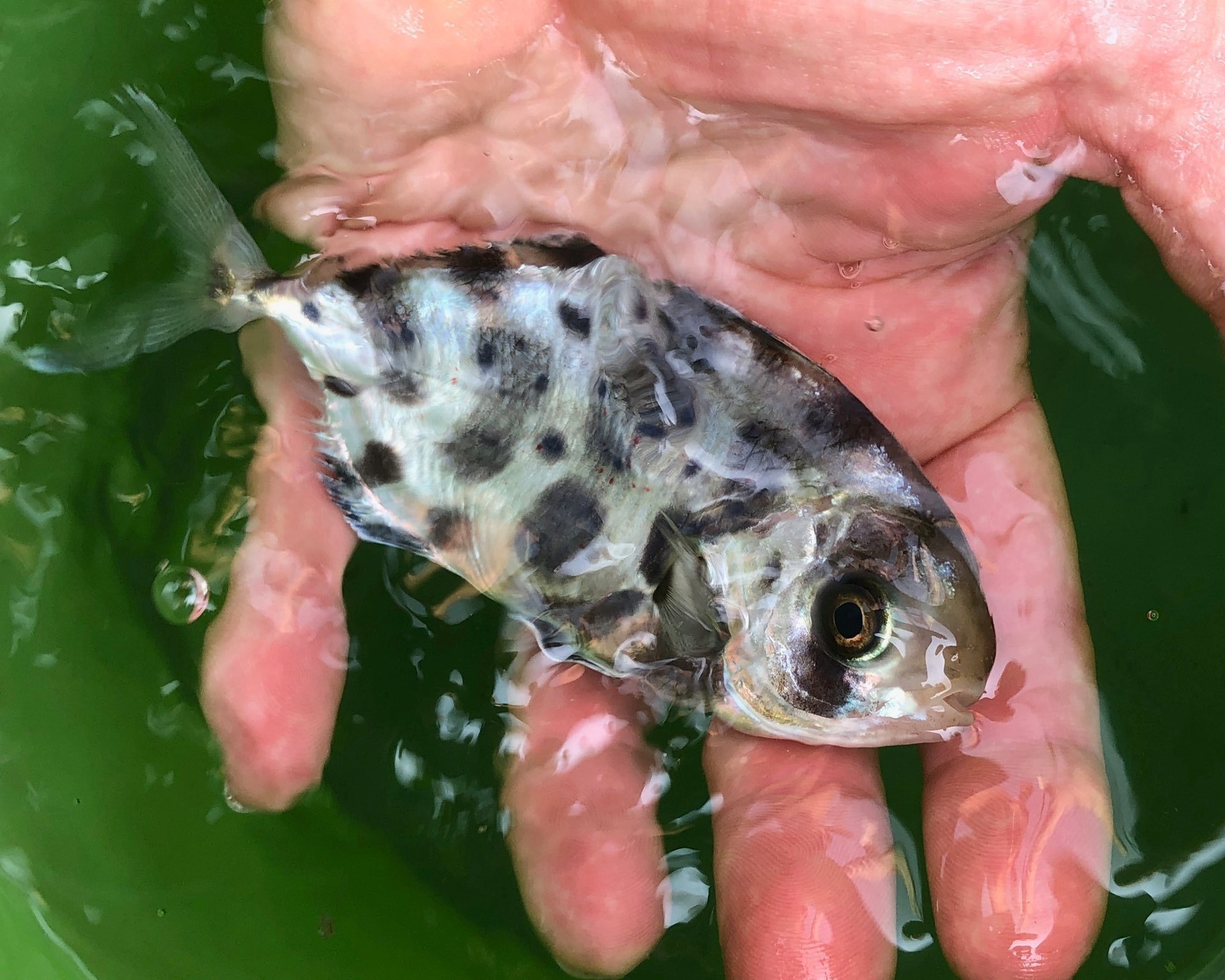
Spotted Driftfish - Ariomma regulus

Northern Sennet - Sphyraena borealis
Northern Sennet are a member of the barracuda family. One of the more common seasonal visitors to the Northeastern U.S. during warmer months.
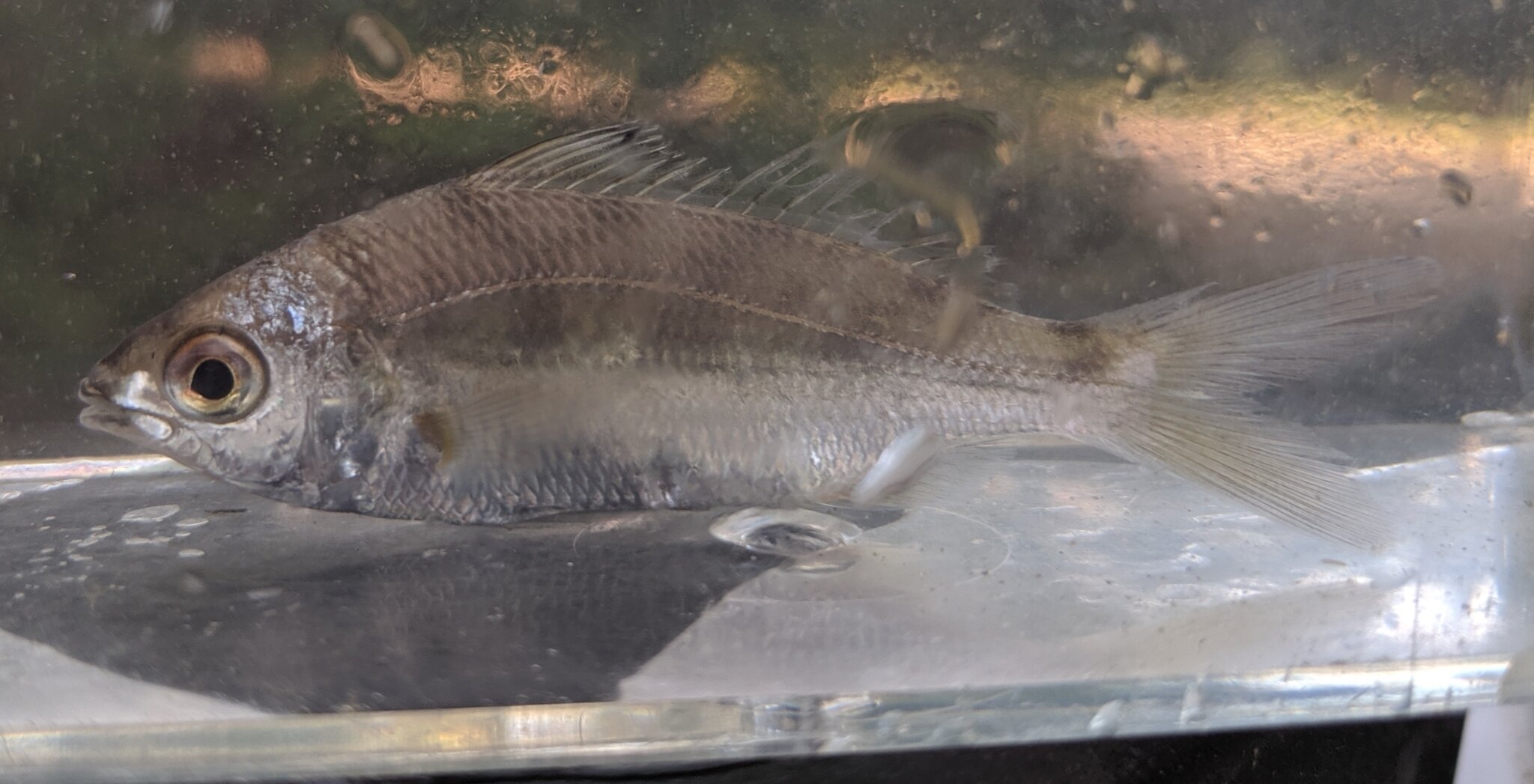
Tidewater Mojarra, E. harengulus - photo: marinenature - iNaturalist
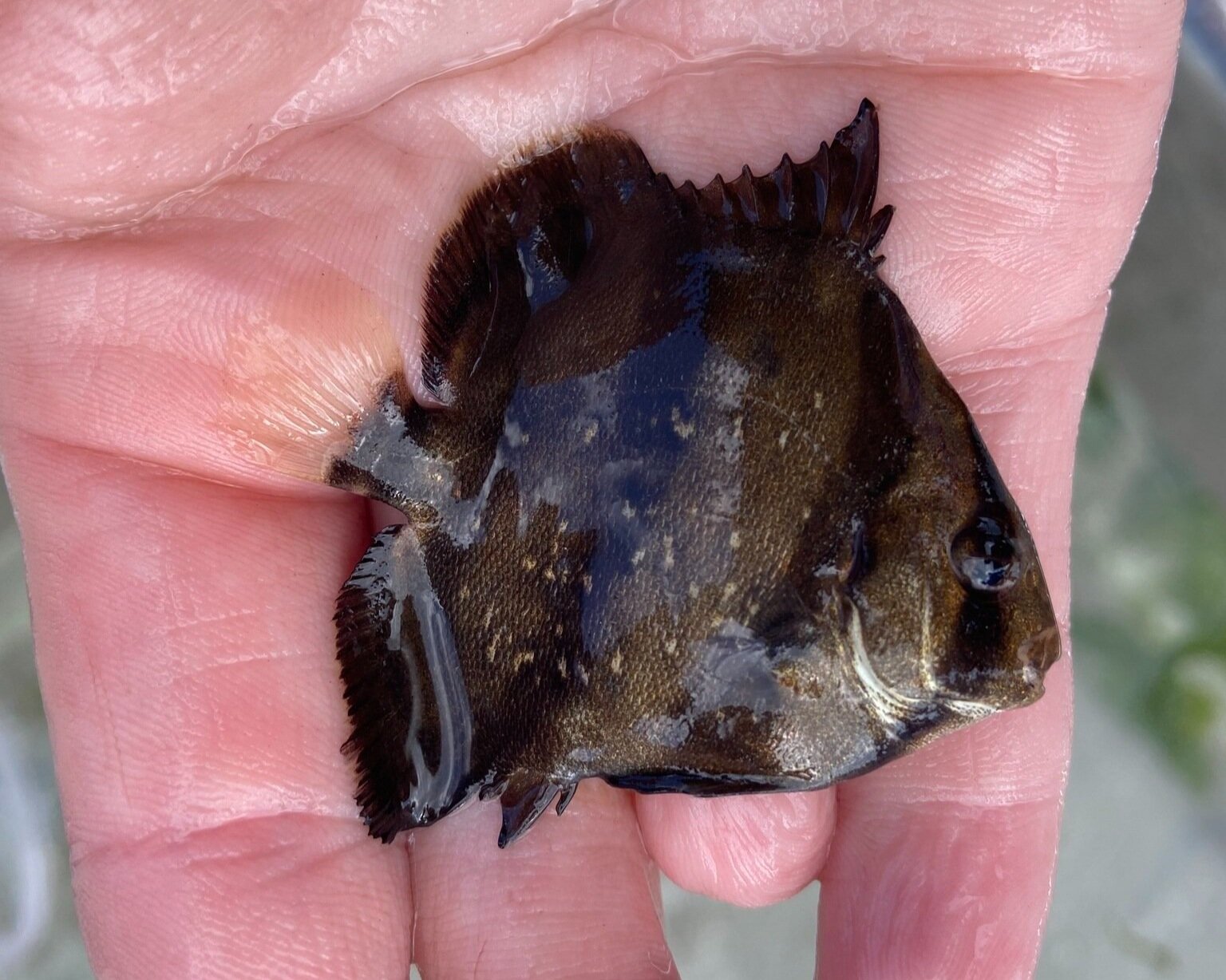
Atlantic Spadefish, C. faber - photo: cbjoiner - iNaturalist

Grey Snapper, L. griseus - photo: zackroyle - iNaturalist

Northern Red Snapper - Lutjanus campechanus
Photo credit - Aidan Perkins
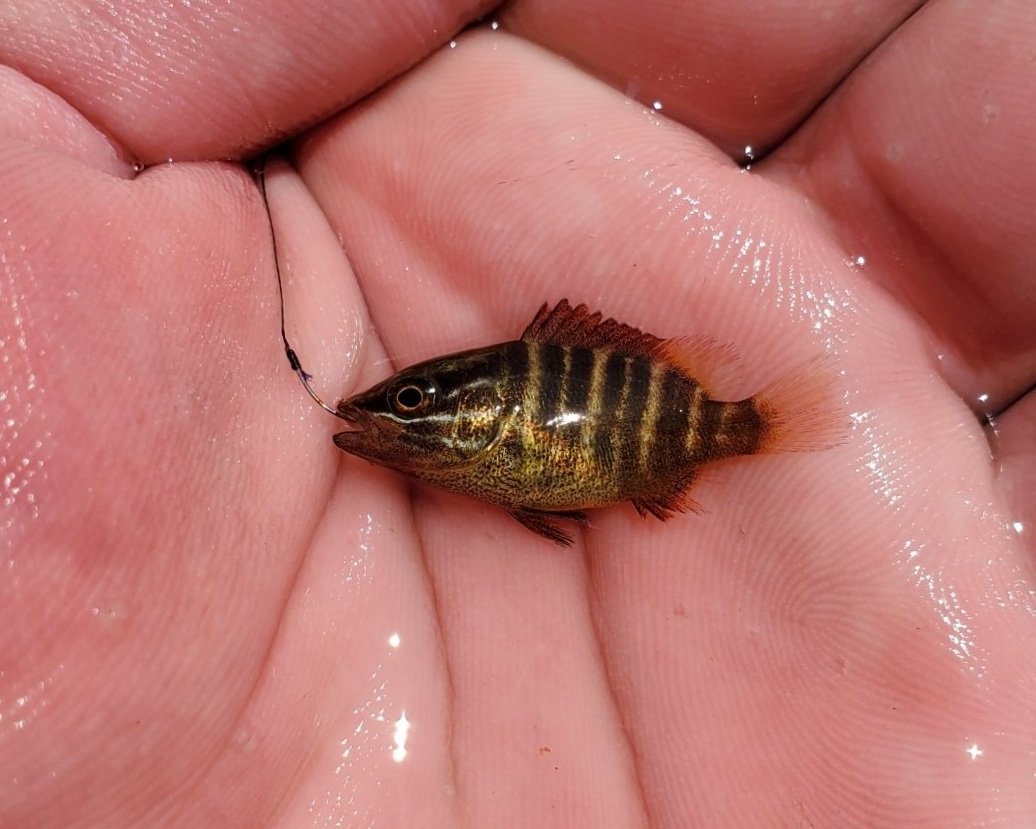
Schoolmaster - Lutjanus apodus
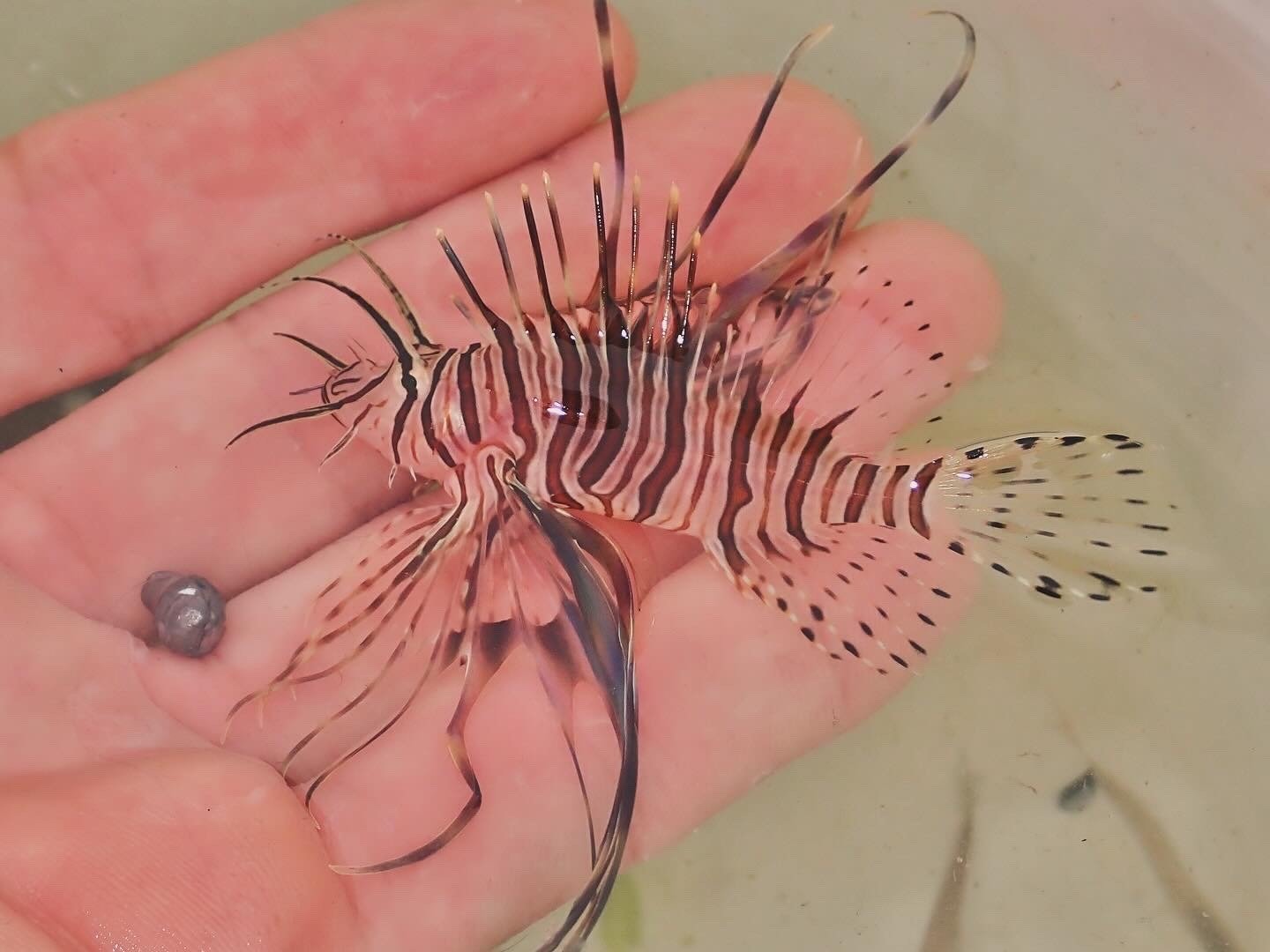
Lionfish - Pterois volitans

Grey Triggerfish - Balistes capriscus
Often reported as adults in New England during the summer months, this seasonal visitor from more temperate latitudes is likely not a “true” Gulf Stream Orphan. It is likely that this species is merely visiting New England at the top of their geographic range rather than a wayward tropical species that is completely displaced from its native range. Photo Credit - Michael Zambardino

Squirrelfish - Holocentrus adscensionis
Photo credit - Aidan Perkins

Bandtail Pufer - Sphoeroides spengleri
Photo credit - Alex Shure
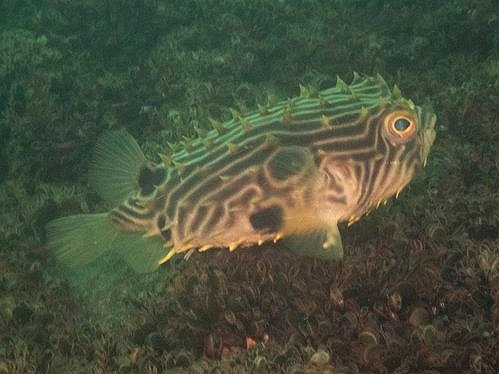
Striped Burrfish - Chilomycterus schoepfii
A common resident of coastal ecosystems in the Mid-Atlantic Bight, Striped Burrfish are generally not considered a "true" GSO since they seasonally creep northward rather than relying on the Gulf Stream for dispersal. Photo credit - Neil DeMaster

Smooth Pufferfish - Lagocephalus laevigatus

Inshore Lizardfish - Synodus foetens

Night Sergeant - Abudefduf taurus
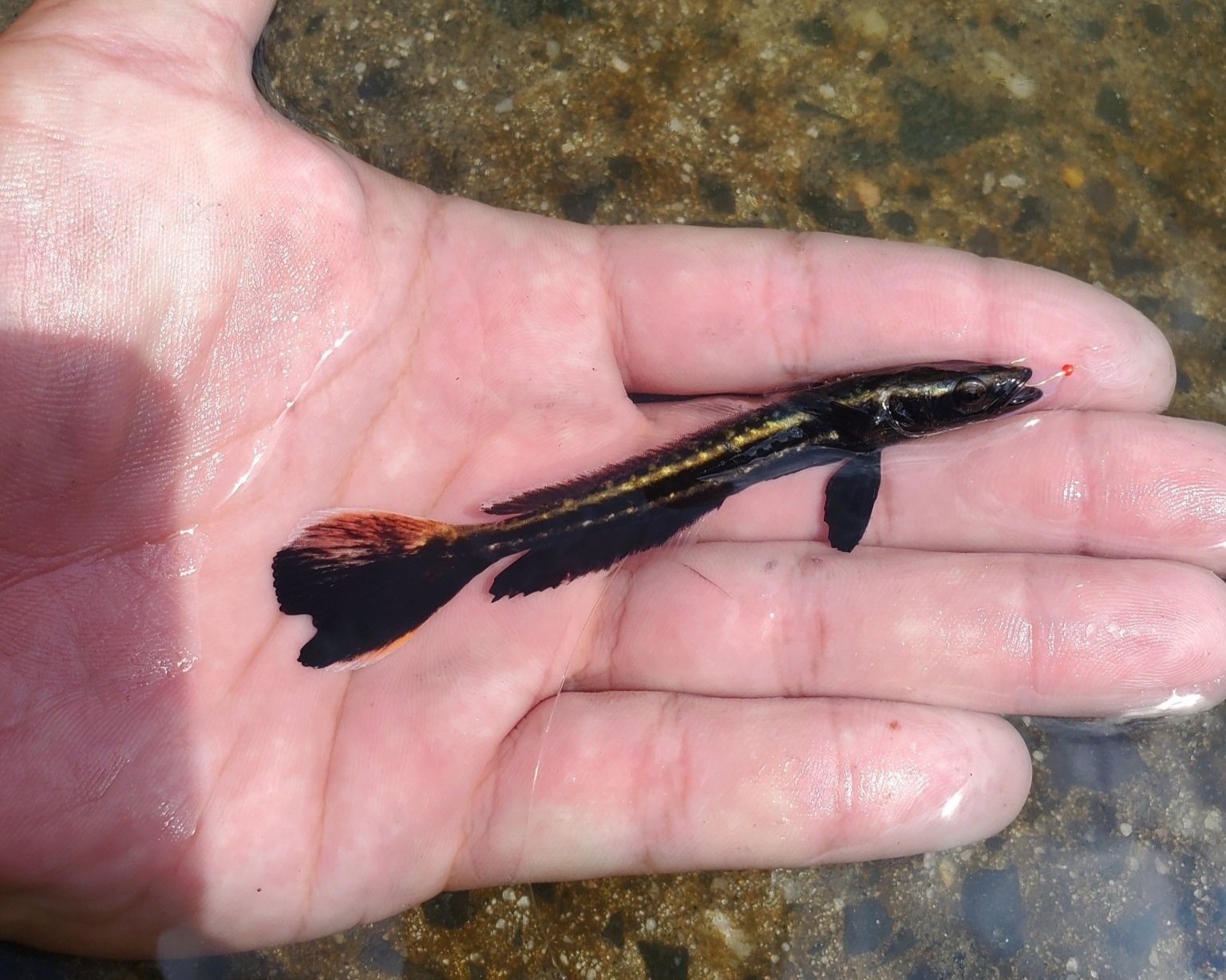
Cobia - Rachycentron canadum
















































